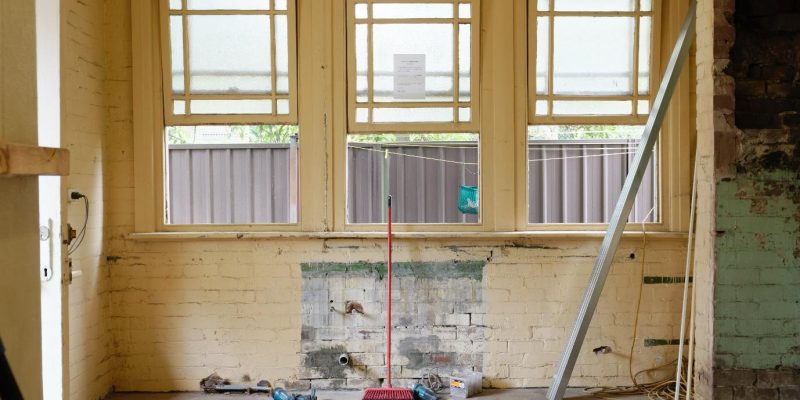Are you one of the many homeowners gearing up for a home renovation project this year? While it can be an exciting (and often necessary) undertaking, it’s essential to be aware of the potential health hazards that can come with it. There are many things to watch out for, from lead paint and asbestos to mold and chemical fumes during a home renovation. All of which can lead to minor and chronic health complications.
Therefore, before tearing down walls or ripping up floorboards, familiarize yourself with these potential health hazards and take the necessary precautions to limit them.
Your safety (and your family’s health) is worth it.
Asbestos Exposure
Asbestos is a mineral with fire-resistant properties. It was widely used in building materials. Unfortunately, it has been linked to several chronic health conditions, including lung cancer and mesothelioma. Any home built before the 1970s might contain asbestos.
If you’re planning on carrying out any activity that involves disturbing potential asbestos-containing materials (ACMs), you must employ a certified professional for an inspection. If the ACMs contain asbestos, you’ll need to take special precautions to avoid exposure, such as wearing a respirator and properly disposing of the materials. See a doctor immediately if you feel you’ve been exposed to asbestos.
You must also consult a lawyer to discuss your legal options if your exposure was due to the negligence of a third party. Since Florida has the second-highest incidence of mesothelioma deaths in the country, institutes have been established there to help people battling it. Therefore, it might help to look for institutes that can help and visit their Florida office to learn more about your rights.
Lead Paint Exposure
Lead paint was commonly utilized in homes before it was banned in 1978. Like asbestos, lead paint can cause several serious health problems, including brain damage, learning disabilities, and high blood pressure.
Home renovation projects like sanding, stripping, or demolishing can release lead dust into the air. It can expose your family and you to lead poisoning. If your home was built before 1978, know that it contains lead paint and take the necessary precautions to avoid exposure. These include using a HEPA-filtered vacuum during the cleanup, wet-sanding surfaces instead of dry-sanding, and lead-safe work practices. Immediately get a blood test if you feel you’ve been exposed.
Electrical Issues
According to the Consumer Product Safety Commission (CPSC), electrical hazards are responsible for an estimated 2,300 deaths and 10,390 injuries annually in the US. That’s why it’s essential to be careful when dealing with electricity during a home renovation.
Some common electrical hazards to watch out for include outdated or damaged wiring, water-damaged outlets, and overloaded circuits. If you’re not sure how to safely deal with an electrical issue, don’t hesitate to call in a professional. They’ll assess the situation and safely resolve it. Even after the problem has been fixed, check for signs of electrical damage, such as flickering lights or warm outlets. You must also wear rubber-soled shoes while working with electricity to avoid shocks.
Mold Exposure
Mold is an indoor fungus that grows where there is too much moisture. Homes at risk of water damage from drainage, flooding, leaks, or high humidity are susceptible to mold growth. Mold doesn’t only compromise the structural integrity of your home – it can also cause headaches, breathing problems, and skin irritation.
People with asthma or allergies are especially susceptible to the effects of mold.
While working on projects like ceiling repairs or plumbing, be on the lookout for mold growth. If you see signs of mold, such as discoloration or a musty smell, take steps to remediate the problem right away. To prevent mold growth in the future, make sure your home is adequately ventilated and free of water leaks. You must also regularly check for mold growth in hidden areas, such as under sinks or crawl spaces.
Termite Infestation
Termites are pesky insects that feed on wood. They can cause extensive damage to homes, costing homeowners billions of dollars each year in repairs. In some cases, termites can even cause the collapse of buildings. Termites survive on four things:
- Cellulose from wood
- Moisture
- Shelter
- Decaying organic matter
It’s a good thing that termites rarely sting or bite humans. However, their presence can still pose a severe threat to your health. You may experience itching, redness, swelling, and pain when stung.
You can inspect for termites by looking for wood that sounds hollow when tapped, termite droppings, or wings near doors and windows. You can get fumigation services to rid yourself of this infestation.
After completing your renovation project, protect your home from a further termite infestation by removing wood debris and excess moisture from the area. Also, seal any cracks/crevices in your home’s foundation to prevent termites from entering.
Falls and Other Injuries
It might tempt you to climb the ladder and inspect your asphalt shingle roof or paint the second-story windows to save money, but be careful. Falls from roofs and ladders are a leading cause of construction site injuries. Falls are, unfortunately, the most common cause of injury in home renovation projects, accounting for over 30% of all injuries. Other leading causes of injury include being struck by an object, electrocution, and being caught in or between objects.
To avoid injury, taking precautions is essential when working on any home renovation project. Always follow the manufacturer’s instructions when using tools and equipment. If you’re uncomfortable with a particular task, don’t hesitate to ask for help. Be sure to get safety gear, such as gloves, goggles, and a dust mask, to protect yourself from harmful materials.
Conclusion
Home renovations are a viable way to improve your home’s value and livability. Plus, the sense of accomplishment you’ll feel after completing a project is unmatched. Nevertheless, it’s crucial to be aware of the potential hazards involved in any home improvement project. You don’t want to admire your handy work with a plastered arm from a fall off the ladder or suffer other serious health consequences. Following simple safety precautions can limit these hazards, enabling you to enjoy a successful home renovation project.




















